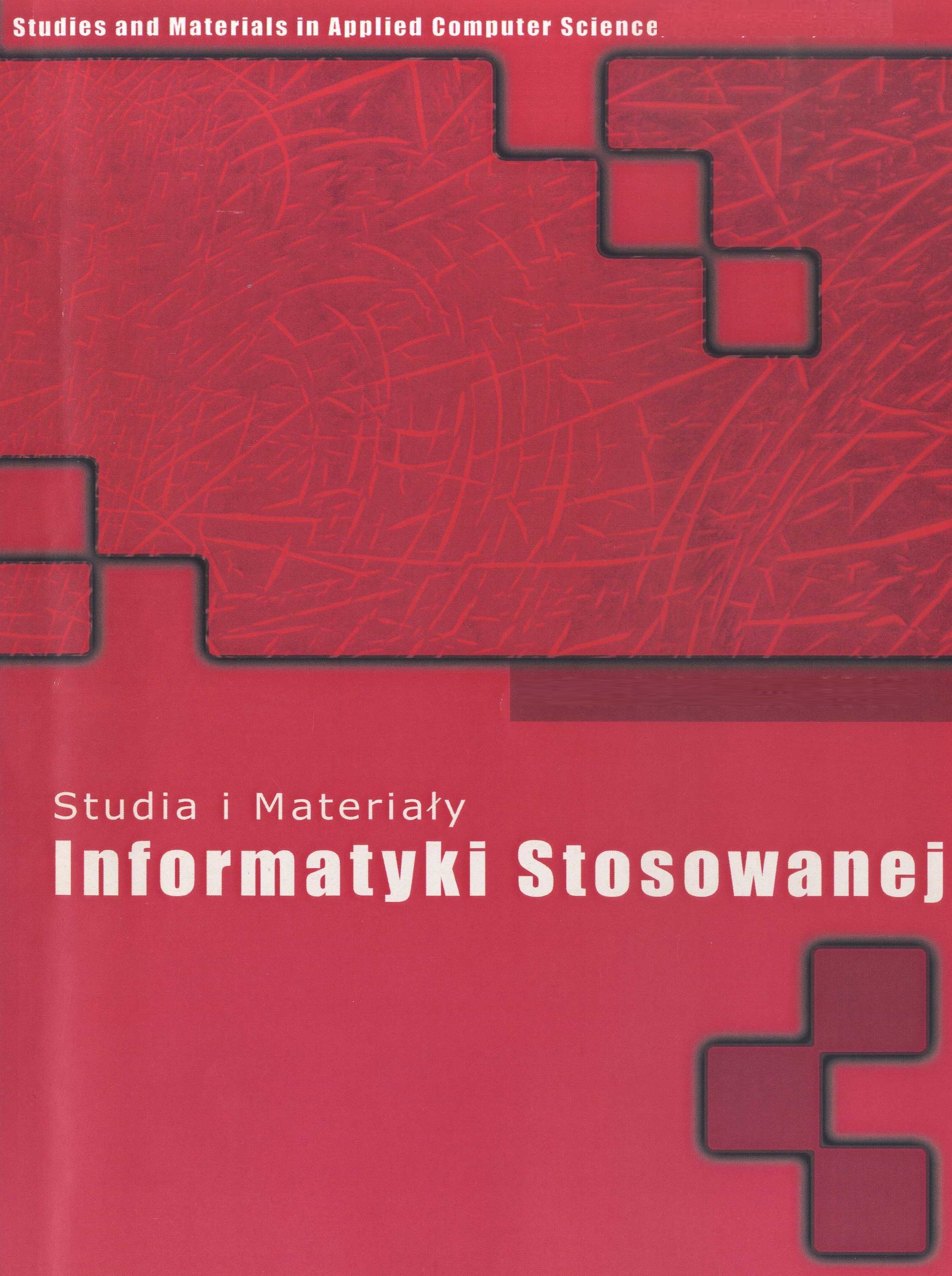Iontophoresis of the eye - a computational approach
DOI:
https://doi.org/10.34767/SIMIS.2023.01.04Słowa kluczowe:
Model obliczeniowy, uczenie maszynowe, jonoforeza, oko, dostarczanie leku.Abstrakt
Jonoforeza jest skuteczną, nieinwazyjną metodą wewnątrzgałkowego podawania leków opartą na prądzie elektrycznym. Ma jednak wiele ograniczeń, które można rozwiązać za pomocą skutecznych modeli obliczeniowych opartych zarówno na uczeniu maszynowym (podejście oparte na danych), jak i innych metodach i technikach sztucznej inteligencji. Do tej pory brakuje modeli obliczeniowych wykorzystujących AI/ML, w tym dla samego mechanizmu jonoforezy. Ich szersze zastosowanie pomogłoby ułatwić dostarczanie leków do oczu, co pozostaje poważnym wyzwaniem ze względu na liczne bariery w oku. Celem artykułu jest zbadanie wykonalności opracowania modelu obliczeniowego dla jonoforezy ocznej przy użyciu dostępnych metod i technik sztucznej inteligencji.
Bibliografia
Wei D, Pu N, Li SY, Wang YG, Tao Y. Application of iontophoresis in ophthalmic practice: an innovative strategy to deliver drugs into the eye. Drug Deliv. 2023; 30(1):2165736.
Molokhia S, Papangkorn K, Butler C, Higuchi JW, Brar B, Ambati B, Li SK, Higuchi WI. Transscleral Iontophoresis for Noninvasive Ocular Drug Delivery of Macromolecules. J Ocul Pharmacol Ther. 2020; 36(4):247-256.
Drakon AK, Pateyuk LS, Sheludchenko VM, Korchazhkina NB. Lekarstvennyi elektroforez v oftal'mologii [Ocular iontophoresis]. Vestn Oftalmol. 2021; 137(6):119-127.
Gelfuso GM, Ferreira-Nunes R, Dalmolin LF, Dos S Ré AC, Dos Santos GA, de Sá FAP, Cunha-Filho M, Alonso A, Neto SAM, Anjos JLV, Aires CP, Lopez RFV, Gratieri T. Iontophoresis enhances voriconazole antifungal potency and corneal penetration. Int J Pharm. 2020; 576:118991.
Joseph M., Trinh H.M., Cholkar K., Pal D., Mitra A.K. Recent perspectives on the delivery of biologics to back of the eye. Expert Opin. Drug Deliv. 2017;14:631–645. doi:10.1080/17425247.2016.1227783.
Yavuz B., Kompella U.B. ocular drug delivery. Handb. Exp.Pharmacol. 2017;242:57–93.
Behar-Cohen F., El Aouni A., Gautier S., David G., Davis J.,Chapon P., Parel J. Transscleral Coulomb-controlled Iontophoresis of Methylprednisolone into the Rabbit Eye:Influence of Duration of Treatment, Current Intensity and Drug Concentration on Ocular Tissue and Fluid Levels. Exp.Eye Res. 2002;74:51–59. doi: 10.1006/exer.2001.1098.
Zhao F., Fan S., Ghate D., Romanova S., Bronich T.K., Zhao S. A Hydrogel Ionic Circuit Based High-Intensity Iontophoresis Device for Intraocular Macromolecule andNanoparticle Delivery. Adv. Mater. 2022;34:2107315. doi:10.1002/adma.202107315.
Rojek I., Macko M., Mikołajewski D., Sága M., Burczyński T. Modern methods in the field of machine modelling and simulation as a research and practical issue related to Industry 4.0. Bulletin of the Polish Academy of Sciences. Technical Sciences 2021; 69(2): e136717.
Duch W., Nowak W., Meller J., Osiński G., Dobosz K., Mikołajewski D., Wójcik G.M. Consciousness and attention in autism spectrum disorders. Proceedings of Cracow Grid Workshop 2010, 202-211.
Mikołajewska E., Mikołajewski D. Zastosowania automatyki i robotyki w wózkach dla niepełnosprawnych i egzoszkieletach medycznych. Pomiary Automatyka Robotyka 2011; 15(5):58-63.
Mikołajewska E., Mikołajewski D. Roboty rehabilitacyjne. Rehabil. Prakt 2010; 4:49-53.
Mikolajczyk T., Mikołajewska E., Al-Shuka H.F.N. Malinowski T., Kłodowski A., Pimenov D.Y., Paczkowski T., Hu F., Giasin K., Mikołajewski D. et al. Recent Advances in Bipedal Walking Robots: Review of Gait, Drive, Sensors and Control Systems. Sensors 2022, 22, 4440. https://doi.org/10.3390/s22124440.
Macko M., Szczepański Z., Mikołajewski D., Mikołajewska E., Listopadzki S. The method of artificial organs fabrication based on reverse engineering in medicine. Proceedings of the 13th International Scientific Conference: Computer Aided Engineering 2017, 353-365.
Mikołajewska E., Mikołajewski D. Informatyka afektywna w zastosowaniach cywilnych i wojskowych. Zeszyty Naukowe/Wyższa Szkoła Oficerska Wojsk Lądowych im. gen. T. Kościuszki 2013; 2:171-184.
Mikołajewska E., Prokopowicz P., Mikołajewski D. Computational gait analysis using fuzzy logic for everyday clinical purposes–preliminary findings. Bio-Algorithms and Med-Systems 2017; 13(1):37-42.
Prokopowicz P., Mikołajewski D., Mikołajewska E., Kotlarz P. Fuzzy System as an Assessment Tool for Analysis of the Health-Related Quality of Life for the People After Stroke. In: Rutkowski L., Korytkowski M., Scherer R., Tadeusiewicz R., Zadeh L., Zurada J. (eds) Artificial Intelligence and Soft Computing. ICAISC 2017. Lecture Notes in Computer Science(), vol 10245. Springer, Cham. https://doi.org/10.1007/978-3-319-59063-9_64.
Kahankova R., Jezewski J., Nedoma J., Jezewski M., Fajkus M., Kawala-Janik A., Wen H., Martinek R. Influence of gestation age on the performance of adaptive systems for fetal ECG extraction. Advances in Electrical and Electronic Engineering 2014; 15(3):491-501.
Kawala-Janik A., Podpora M., Baranowski J., Bauer W., Pelc M. Innovative approach in analysis of EEG and EMG signals—Comparision of the two novel methods. 2014 19th International Conference on Methods and Models in Automation and Robotics (MMAR), IEEE 2014, 804-807.
Ważny M., Wojcik G.M. Shifting spatial attention—numerical model of Posner experiment. Neurocomputing 2010; 135:139-144.
Wojcik G.M., Garcia-Lazaro J.A. Analysis of the neural hypercolumn in parallel pcsim simulations. Procedia Computer Science 2010; 1(1):845-854.

